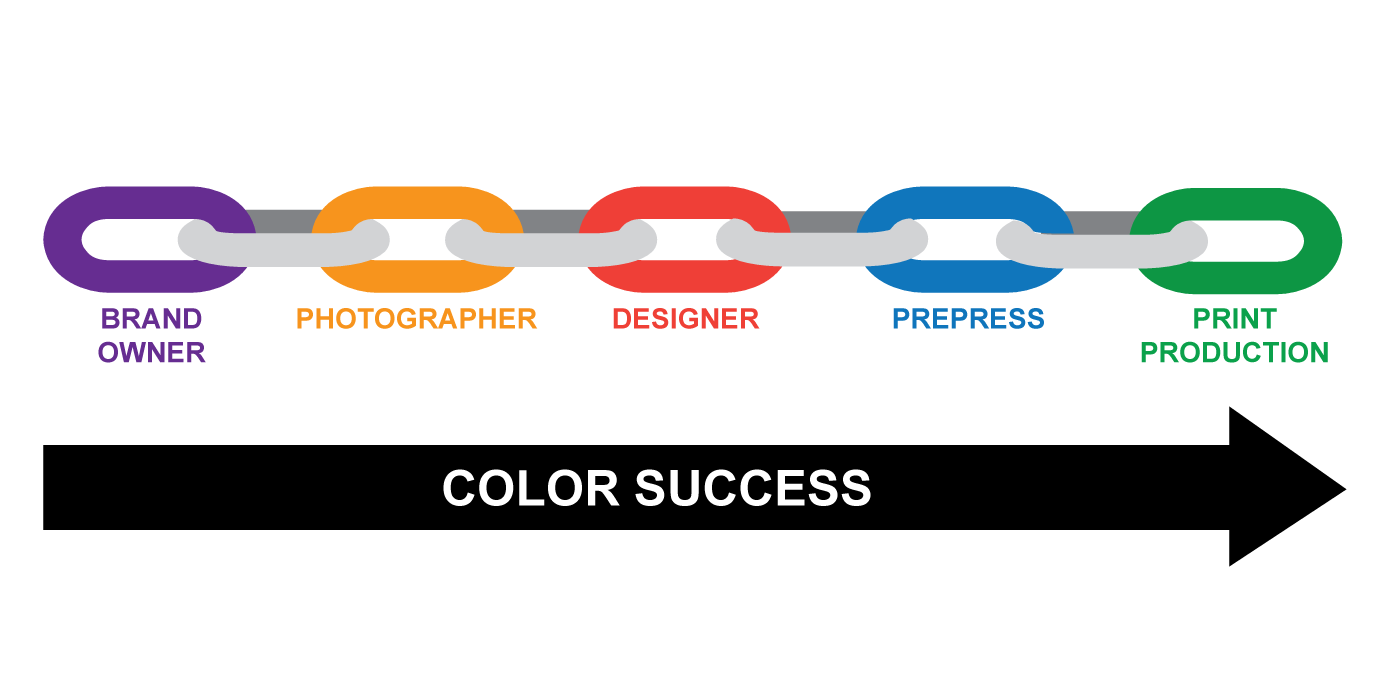How do you define success when it comes to printing color? For most, it’s printing the right color — and the right color is accurately producing the intended color. Not so long ago, the printer — and prepress, more specifically — had most of the control over color and how good (or bad!) it looked when it was printed. Today, printing the intended color crosses many more organizational lines — from brand to photography to design to print production. Color success only happens when all of these businesses are aligned and on the same “color page” when it comes to setting expectations, communication, and production considerations.

Setting Color Expectations
For the client, the salesperson, the CSR, and everyone involved in the print production process, it’s imperative to have a foundational understanding of color. Printing is a reproduction process where some colors will be produced accurately while others may not. The viewing environment impacts color perception. Color is incredibly subjective. The same printed color looks different on different substrates. Not understanding and addressing these points can create communication problems, set unrealistic color goals, and delay the print production process.
Communicating Color Effectively
Communicating color in the print supply chain is sometimes done objectively, other times visually. For example, designers, salespeople, and CSRs tend to communicate color subjectively (based on what they see) while in print production, prepress, and digital print/press operators tend to communicate color scientifically (based on measurement). Both methods are necessary and integral to printing the intended color, but being able to accurately communicate color both subjectively (using proper, precise terminology) and objectively (using measurement devices and specifications we can all agree on), are both important keys to color success.
Production Considerations
As mentioned earlier, printing the intended color reaches beyond the walls of the printing company. Even as good as digital cameras are today, there’s still a lot of bad color being printed out there, and properly correcting images in Photoshop can happen in design or prepress. Then, though you might have a perfect file created in InDesign, choosing an incorrect setting when creating the PDF can wreak color havoc on all of the time, effort, and care you’ve put into the job up to this point. In print production, managing all of these colors from prepress to ink-on-paper to produce the intended color is critical to success.
From September 21 through 25, during PRINTING United Alliance's weeklong Color Ready! event (2-3 p.m. ET daily), we’ll cover all of these important color keys to success and so much more from some of the most knowledgeable experts in the industry. Whether you’re in design, sales, customer service, or print production, sign up today at printing.org/color-ready to get valuable and actionable ideas and techniques that will help you get better control over the color you print.